
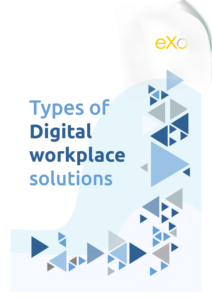

FREE WHITE PAPER
Digital workplace is a buzzword these days. Actually different people use it to mean different things. So what is a digital workplace?
Microsoft 365 has long been the go-to productivity suite for businesses and individuals, offering powerful tools like Word, Excel, and Outlook. However, it’s not the perfect fit for everyone. Whether it’s the recurring subscription costs, privacy concerns, or simply the need for a more lightweight or flexible solution, many users are searching for alternatives.

Fortunately, there are plenty of great options out there—ranging from free open-source software to robust cloud-based platforms that rival Microsoft’s offerings. In this article, we’ll explore some of the best Microsoft 365 alternatives, highlighting their features, benefits, and who they’re best suited for. Whether you’re a freelancer, a small business, or an enterprise looking to break free from vendor lock-in, we’ve got you covered.
Let’s be real—subscriptions add up, especially for businesses or individuals on a tight budget. If you’re just using Word and Excel occasionally, paying a monthly fee might not feel worth it.
Not everyone is comfortable with their data being stored on Microsoft’s servers. If you want more control over your files and privacy, self-hosted or open-source alternatives might be a better fit.
Once you’re deep in the Microsoft ecosystem, it can be hard to switch. If you want more flexibility—like using different software without compatibility headaches—alternatives like Google Workspace or LibreOffice might make more sense.
Microsoft 365 is powerful, but sometimes you just need something simple. If you don’t need all the bells and whistles, tools like Google Docs or Zoho might be a better (and easier) choice.
Let’s face it—Microsoft apps can be heavy on your computer. If your device is slowing down every time you open Word, a lighter alternative like LibreOffice or Google Docs could save you a lot of frustration.
Some businesses or industries have specific compliance rules that Microsoft doesn’t fully support. In those cases, an alternative solution might be a better fit.
For organizations seeking cost-effective productivity solutions, several robust free office alternatives deliver impressive functionality without the premium price tag. For those who prioritize cost-effectiveness, here are some top-performing free productivity suites.
eXo Platform takes a unique approach by integrating office productivity with a collaboration & communication hub. This all-in-one solution includes features like:
Designed with enterprise collaboration in mind, eXo Platform is ideal for larger teams or businesses focused on employee engagement and collaboration. It has both free and custom-priced enterprise plans, which makes it adaptable to organizations of varying sizes and needs.
Self-hosted or cloud-based.

Open Source Alternative to Microsoft 365
Empower your organization with eXo Platform to break free from Microsoft dependencies and enhance collaboration with innovative solutions
Open Source Alternative to Microsoft 365
Empower your organization with eXo Platform to break free from Microsoft dependencies and enhance collaboration with innovative solutions
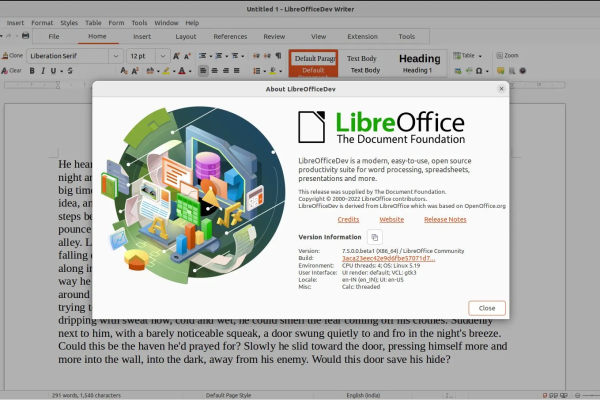
LibreOffice is a leading open-source office suite, offering six programs: Writer, Calc, Impress, Draw, Math, and Base. Its strong compatibility with Microsoft Office formats and advanced offline tools (like the database management tool, Base) make it a top choice for users who need a comprehensive free suite.
Open-source (free)
Desktop application (can be self-hosted on your own servers); does not offer cloud hosting.
Completely free
Extensive range of applications covering various productivity needs.
Strong support for Microsoft Office file formats, ensuring smooth document exchange.
Active community support and regular updates.
Lacks integrated cloud storage and real-time collaboration features.
The user interface may appear dated compared to modern office suites.
Limited mobile app support, which may hinder on-the-go productivity.
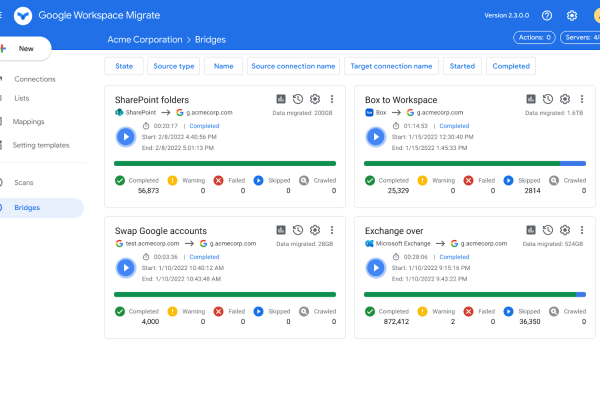
Google Workspace’s free version is a great option for personal use, especially for those who need real-time collaboration and easy access across devices. Key features include:
Cloud-based (Google’s servers), accessible via web browsers on various devices.

FreeOffice features a familiar interface with ribbon and classic menu options, making it an easy switch for Microsoft 365 users. Its applications—TextMaker, PlanMaker, and Presentations—are optimized for touchscreen use and support various file formats.
Free version available; paid version (SoftMaker Office) offers additional features.
Desktop application: available for Windows, macOS, and Linux.
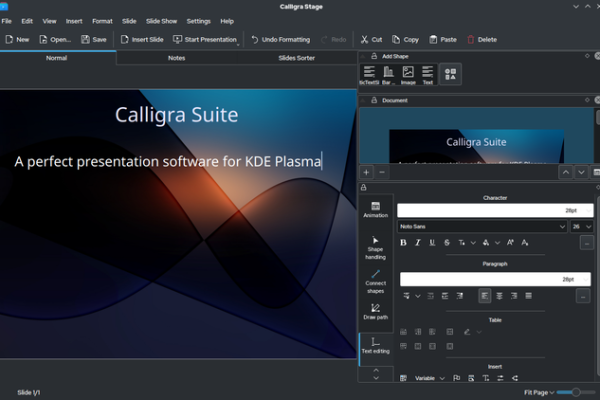
Developed by KDE, Calligra Suite is designed for users who need both office tools and creative applications. It’s ideal for those working on KDE-based systems, and while it has a unique horizontal layout that might take time to get used to, it’s a great choice for users looking for both business and creative functionalities.
Completely free and open-source.
Primarily designed for Linux distributions; also available for Windows and macOS.
Includes unique applications like Karbon for vector graphics and Krita for digital painting.
Tightly integrated with the KDE desktop environment.
Offers a wide range of tools beyond standard office applications.
The horizontal navigation layout may require an adjustment period.
Less intuitive interface compared to other office suites.
Limited development activity and community support.
Limited mobile support.
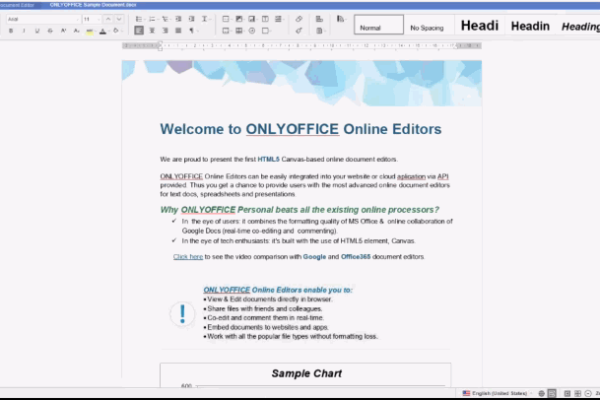
OnlyOffice Community Edition is a web-based productivity suite designed with document management and real-time collaboration in mind. It’s a strong option for teams that need file organization, project management, and CRM integration, though the community edition has more limitations than the enterprise version. Key features include:
| Feature | Capability |
| Document Management | Advanced file organization and sharing |
| Integration | Compatible with cloud storage services |
| Collaboration | Real-time co-editing with up to 20 simultaneous connections |
| Access Control | Comprehensive rights management system |
The suite particularly excels in enterprise-focused features like CRM integration and project management tools, though the community edition has some connection limitations compared to its enterprise counterpart.
This web-based platform offers a collaborative environment focused on document management. OnlyOffice Community Edition is great for teams needing advanced file organization and sharing, as well as CRM integration and project management. However, it has limitations in the free version compared to its enterprise version.
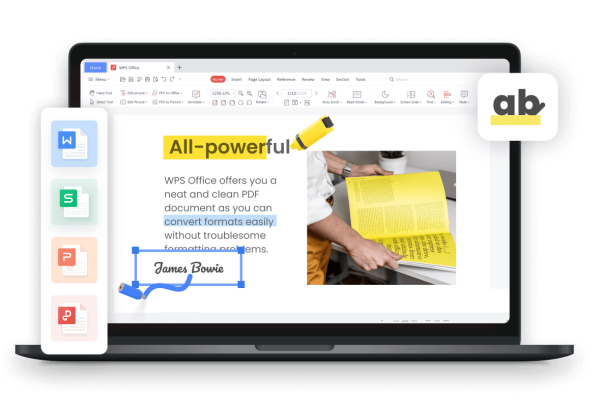
With over a billion installations, WPS Office has become a popular Microsoft 365 alternative. The premium version provides features like AI-powered document analysis, PDF editing, and cross-platform compatibility with Google Docs and Microsoft Office. It also comes with 20GB of cloud storage and an extensive template library.
Desktop application with cloud storage integration. Available for Windows, macOS, Linux, iOS, and Android. Includes 20GB of cloud storage.
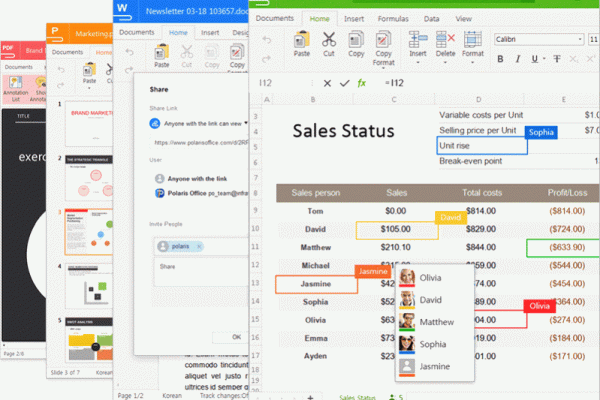
Trusted by companies like Amazon and Samsung, Polaris Office is designed for mobile productivity. With a subscription of around $40 per year, it syncs across devices and provides document security with wide format support, making it ideal for mobile-centric users.
Free version with limited storage; Paid plans from $40/year.
Cloud-based with desktop and mobile apps.
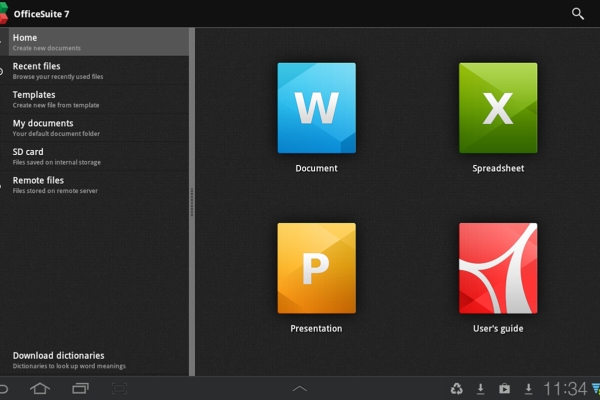
Known for its user-friendly interface and professional-grade functionality, OfficeSuite integrates with Google Drive, Dropbox, and OneDrive. It’s an intuitive and comprehensive tool for document processing, making it easy to adopt and highly functional.
Free version with limitations; Paid plans from $29.99/year.
Desktop-based with 50GB-100GB of cloud storage.
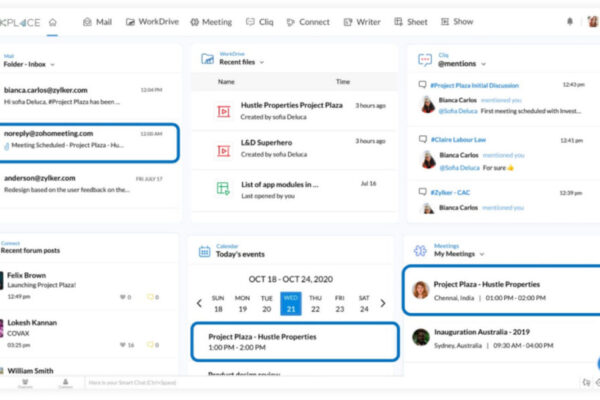
Zoho Workplace combines a suite of productivity and collaboration tools, making it a strong choice for growing businesses. Starting at $30 per user annually, it includes tools for email, video conferencing, and advanced admin controls. Zoho also offers scalable storage up to 5TB, making it ideal for collaborative teams.
Free for small teams; Paid plans from $30/user/year.
Fully cloud-based. Offers up to 5TB of storage.
When evaluating potential office alternatives, understanding key features ensures you select a solution that aligns with your organizational needs. Let’s examine the critical aspects that should influence your decision-making process.
To choose the best office suite, it’s important to weigh key factors based on your needs:
File format compatibility remains a cornerstone consideration when choosing an office alternative. The ability to work seamlessly with Microsoft Office formats (docx, xlsx, pptx) is essential for business continuity. Look for suites that offer:
| Suite | Microsoft Office Compatibility |
| LibreOffice | High (but may have formatting issues) |
| Google Workspace | Good (relies on cloud conversion) |
| WPS Office | Excellent |
| OnlyOffice | Excellent |
| FreeOffice | High |
| Polaris Office | Good |
| OfficeSuite | Excellent |
| Zoho Workplace | Good |
| eXo Platform | Moderate |
Modern office suites should integrate effectively with popular cloud storage services. Most alternatives support multiple platforms, with storage capacities ranging from 5GB to 50GB in free tiers. Key integration options typically include:
| Suite | Cloud Storage | Hosting |
| LibreOffice | No | Desktop-based |
| Google Workspace | 15GB free, paid upgrades | Cloud-based |
| WPS Office | 20GB | Cloud & desktop |
| OnlyOffice | Self-hosted or third-party | Self-hosted |
| FreeOffice | No | Desktop-based |
| Polaris Office | 1GB free, up to 100GB paid | Cloud & desktop |
| OfficeSuite | 50GB–100GB | Cloud & desktop |
| Zoho Workplace | 5GB–5TB | Cloud-based |
| eXo Platform | Custom | Cloud or self-hosted |
Effective collaboration capabilities have become non-negotiable in today’s work environment. When assessing collaboration features, consider:
For businesses and teams, real-time document editing and sharing are essential.
| Suite | Real-time Collaboration | Team Management |
| LibreOffice | No | No |
| Google Workspace | Yes | Yes |
| WPS Office | Yes (Premium) | Limited |
| OnlyOffice | Yes (Self-hosted) | Yes |
| FreeOffice | No | No |
| Polaris Office | Limited | Yes |
| OfficeSuite | Limited | Yes |
| Zoho Workplace | Yes | Yes |
| eXo Platform | Yes | Yes |
Mobile accessibility ensures productivity continues beyond the desktop. Essential mobile features should include:
While cloud connectivity offers numerous advantages, robust offline functionality remains crucial. Consider these aspects of offline access:
The ideal office alternative should balance these features according to your specific needs. Consider factors like security requirements, existing technology infrastructure, and user training needs. Some organizations may prioritize offline capabilities due to connectivity constraints, while others might focus on collaboration tools for remote teams.
Remember that the most feature-rich solution isn’t always the best choice – consider your team’s technical proficiency and willingness to adapt to new systems. Security capabilities vary significantly among alternatives, with some offering end-to-end encryption while others provide customer-held keys for enhanced data protection.
Cost considerations should extend beyond the initial pricing to include potential customization needs, training requirements, and long-term scaling costs. Integration with existing tools and workflows can significantly impact implementation success, making it essential to evaluate compatibility with current systems thoroughly.
| Suite | Mobile App | Offline Editing |
| LibreOffice | No | Yes |
| Google Workspace | Yes | Limited |
| WPS Office | Yes | Yes |
| OnlyOffice | Yes | Limited |
| FreeOffice | No | Yes |
| Polaris Office | Yes | Yes |
| OfficeSuite | Yes | Yes |
| Zoho Workplace | Yes | Limited |
| eXo Platform | Yes | Limited |
Microsoft 365 alternatives offer organizations remarkable flexibility, with options ranging from robust free suites to feature-rich premium solutions. Each alternative brings unique strengths – LibreOffice excels in offline capabilities, Google Workspace leads in real-time collaboration, while premium solutions like WPS Office and Zoho Workplace deliver advanced features for specialized business needs. These choices enable organizations to select tools aligned with their specific requirements and budget constraints.
Success in choosing the right office suite depends on careful evaluation of essential factors including file compatibility, collaboration features, mobile accessibility, and offline capabilities. Organizations must weigh their specific needs against available features, considering team size, technical requirements, and growth plans. This thoughtful approach ensures the selected solution enhances productivity while providing sustainable value for years ahead.
To help you make an informed decision, here’s a comprehensive comparison of the leading office alternatives discussed in this article. The following table breaks down essential features, pricing, and capabilities of each solution.
| Office Suite | Type | Pricing | Cloud Storage | Mobile Support | Offline Access | File Compatibility |
| LibreOffice | Free | Free | Third-party only | Limited | Full | High |
| Google Workspace | Free/Paid | Free - $12/user/month | 15GB - Unlimited | Excellent | Limited | Good |
| FreeOffice | Free | Free | No built-in | Good | Full | High |
| Calligra | Free | Free | No built-in | Limited | Full | Moderate |
| OnlyOffice CE | Free | Free | Third-party only | Good | Limited | Excellent |
| WPS Office | Paid | $29.99/year | 20GB | Excellent | Full | Excellent |
| Polaris Office | Paid | $40/year | 1GB - 100GB | Excellent | Full | Good |
| OfficeSuite | Paid | $29.99/year | 50GB - 100GB | Excellent | Full | Excellent |
| Zoho Workplace | Paid | $30/user/year | 5GB - 5TB | Excellent | Good | Good |
| eXo Platform | Paid/Free | Custom pricing | Varies | Excellent | Limited | Good |
Each suite brings unique strengths: LibreOffice is excellent offline, Google Workspace leads in cloud collaboration, and eXo Platform offers comprehensive collaboration tools for team-oriented workflows.
| Feature Category | Free Solutions | Paid Solutions |
| Startup Time | Moderate-Fast | Fast-Very Fast |
| Memory Usage | 200MB-500MB | 300MB-700MB |
| File Processing | Good | Excellent |
| Feature Updates | Quarterly-Yearly | Monthly |
| Support Options | Community | Professional |
When comparing these alternatives to Microsoft 365, several key differentiators emerge:
| Aspect | Microsoft 365 | Free Alternatives | Premium Alternatives |
| Initial Cost | High | None | Moderate |
| Feature Set | Complete | Basic-Moderate | Moderate-Advanced |
| Integration | Extensive | Limited | Moderate |
| Updates | Monthly | Varies | Regular |
| Security | Enterprise-grade | Basic | Advanced |
For business deployments, consider these additional factors:
The choice between these office alternatives often depends on specific use cases. Small teams might find free solutions adequate, while larger organizations typically benefit from premium features in paid alternatives. Consider your requirements for:
Data encryption requirements
Access control needs
Compliance standards
Internet connectivity reliability
Device compatibility requirements
Storage needs
This comprehensive comparison demonstrates that viable alternatives to Microsoft 365 exist across different price points and feature sets. Each solution offers unique advantages, whether it’s LibreOffice’s robust offline capabilities, Google Workspace‘s collaboration features, or WPS Office’s premium functionality.
The best choice depends on your team’s goals and resources. Free options like LibreOffice and Google Workspace provide excellent baseline functionality, while paid suites like WPS Office and eXo Platform add advanced features for larger, collaborative environments.
When selecting a solution, consider compatibility needs, collaboration preferences, and whether offline access is crucial. While feature-rich options might be appealing, balancing functionality with ease of use and cost-effectiveness is essential.
There is no one-size-fits-all solution when replacing Microsoft 365. The right choice depends on your budget, team size, and feature needs:
Microsoft 365 alternatives offer great flexibility, allowing you to select tools that fit your specific productivity needs and budget. Free suites like LibreOffice and Google Workspace are perfect for individual or small teams, while eXo Platform and other paid suites provide the extra capabilities that larger organizations often require. By focusing on your team’s requirements and comparing available features, you can choose an option that enhances productivity and supports sustainable growth.
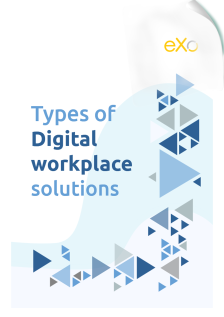
Types of Digital workplace solutions
Digital workplace is a buzzword these days. Actually different people use it to mean different things. So what is a digital workplace?



( Your e-mail address will not be published)
I am a Digital Marketing specialist specialized in SEO at eXo Platform. Passionate about new technologies and Digital Marketing. With 10 years' experience, I support companies in their digital communication strategies and implement the tools necessary for their success. My approach combines the use of different traffic acquisition levers and an optimization of the user experience to convert visitors into customers. After various digital experiences in communication agencies as well as in B2B company, I have a wide range of skills and I am able to manage the digital marketing strategy of small and medium-sized companies.